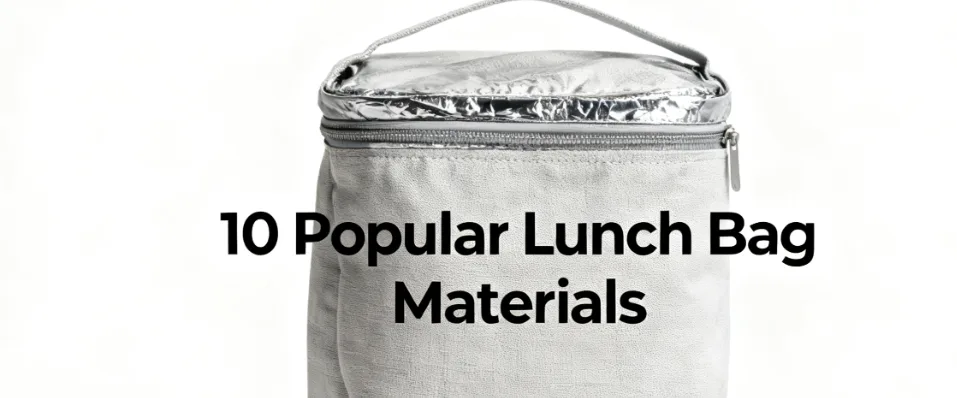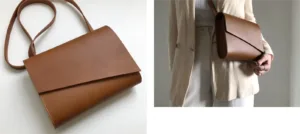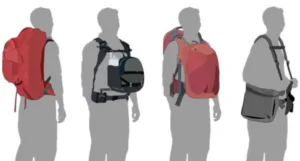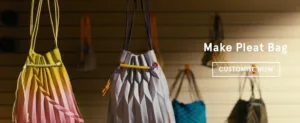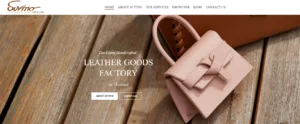Ever opened your lunch bag only to find your sandwich sweating, your drink leaking, or your salad mysteriously warm? You’re not alone. Choosing the wrong lunch bag material can turn your perfectly planned meal into a midday disaster. While some bags look cute, others actually do the job—keeping your food fresh, your soup contained, and your confidence intact. It all comes down to what’s on the inside (and sometimes the outside too).
That’s why understanding lunch bag materials matters—especially for brands and manufacturers aiming for quality and sustainability. From polyester and canvas to EVA, neoprene, and aluminum foil, each option brings its own strengths and weaknesses. Some are perfect for custom insulated lunch bags that keep meals hot or cold, while others are best for reusable lunch bags designed for everyday eco-conscious use. In this guide, we’ll walk you through 10 popular materials used in eco-friendly lunch bag manufacturing, analyzing their pros and cons so you can make smart, sustainable choices for your next design or purchase.
Contents
Lunch Bag Material Comparison Table
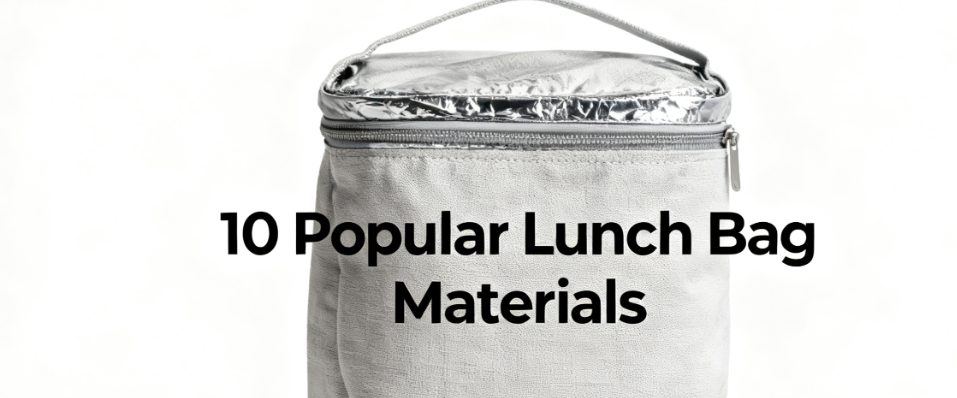
|
Material |
Pros |
Cons |
Typical Lunch Bag Price |
|---|---|---|---|
|
Polyester |
Durable, water-resistant, lightweight |
Not eco-friendly, limited breathability |
Low to mid-range |
|
Canvas |
Strong, biodegradable, printable |
Less water-resistant, heavier |
Mid-range |
|
Nylon |
Water-resistant, strong, flexible |
Not biodegradable, may retain odor |
Low to mid-range |
|
Neoprene |
Excellent insulation, soft, reusable |
Higher cost, bulkier |
Mid to high-range |
|
EVA |
Food-safe, lightweight, water-resistant |
Less durable, can deform under heat |
Moderate |
|
Aluminum Foil |
Excellent heat/cold retention, lightweight |
Prone to tearing, less flexible |
Low to affordable |
|
PEVA |
Non-toxic, eco-friendly, flexible |
Less durable, can wrinkle |
Moderate |
|
RPET |
Eco-friendly, strong, printable |
Slightly higher cost, less soft |
Mid-range |
|
Kraft Paper |
Biodegradable, stylish, lightweight |
Less moisture-resistant, can crease |
Mid-range |
|
TPU |
Durable, flexible, water-resistant |
Higher cost, requires advanced production |
Mid to high-range |
Polyester
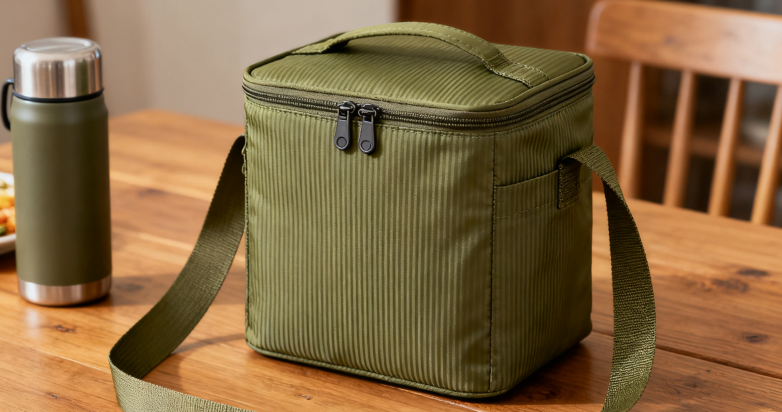
Polyester is one of the most widely used materials in the lunch bag industry. Known for its durability, water resistance, and affordable production cost, it’s a favorite choice among many lunch bag makers. When it comes to controlling overall lunch bag cost, polyester offers an excellent balance between functionality and price, making it ideal for large-scale manufacturing.
In many designs, polyester is used as the outer material of lunch bags because of its ability to withstand wear, retain shape, and resist moisture. It also provides a smooth surface that allows for easy logo printing and customization. Inside the bag, polyester linings are often paired with insulation layers such as foam or aluminum foil to enhance temperature retention and food safety.
Pros
-
Cost-effective and widely available
-
Lightweight yet strong
-
Water-resistant and easy to clean
-
Suitable for printing and branding
Cons
-
Not biodegradable, less eco-friendly
-
Limited breathability
-
Can absorb odors over time
Lunch Bag Price Insight
Polyester-based lunch bags generally sit at the lower to mid-price range in the market. The final lunch bag price often depends on the bag’s design complexity, insulation type, and additional features like zippers, compartments, or eco-friendly coatings. For brands seeking to balance durability with budget, polyester remains one of the most practical options.
Canvas
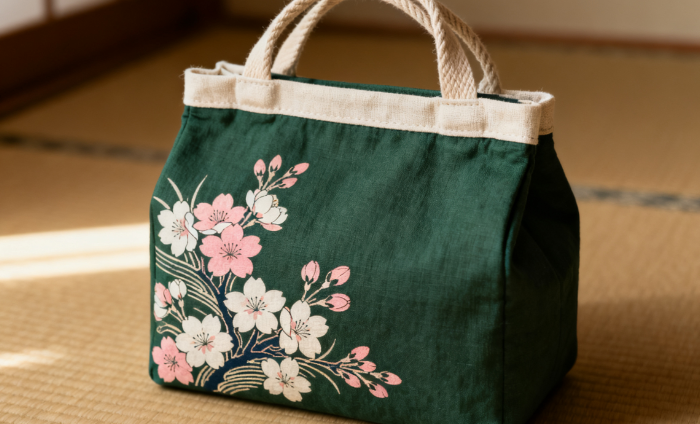
Canvas is one of the most classic and eco-friendly lunch bag materials, widely appreciated for its natural texture, durability, and reusable nature. As an organic or blended cotton fabric, canvas offers a sustainable alternative to synthetic fibers while maintaining strong tear resistance. Many custom lunch bag manufacturers prefer canvas when developing high-end or eco lunch bag collections that appeal to environmentally conscious consumers.
Typically, canvas is used as the outer material of lunch bags, providing a firm structure and a stylish, natural look. The inner material of lunch bags made from canvas is often lined with thermal insulation materials such as aluminum foil or PEVA, ensuring food freshness throughout the day. Its ability to support digital printing, embroidery, or logo stamping also makes it ideal for promotional or private label designs.
Pros
-
Strong, durable, and washable
-
Biodegradable and environmentally friendly
-
Breathable fabric, suitable for food storage
-
Great surface for printing or branding
Cons
-
Naturally absorbent, less water-resistant
-
Heavier than synthetic materials
-
Requires proper care to avoid stains or mold
Lunch Bag Price Insight
Canvas lunch bags typically fall in the mid to premium lunch bag price range due to their sustainable material and refined finish. For brands or distributors looking for affordable lunch bags with a premium feel, canvas offers an ideal balance between quality and cost. Many wholesale lunch bag suppliers and OEM lunch bag manufacturers provide competitive lunch bag factory prices for bulk orders, making it easier to compare lunch bag prices online or request a custom lunch bag price quotation based on size, lining, and print options.
Lunch Bag Order Tip
If you’re planning a bulk lunch bag order or wish to launch a private label canvas collection, partnering with a reliable lunch bag supplier ensures consistency in fabric sourcing and stitching quality. Sunteam, as a professional lunch bag manufacturer in China, provides complete OEM/ODM solutions — from material selection to branding — helping you manage cost, design, and delivery in one seamless process.
Nylon
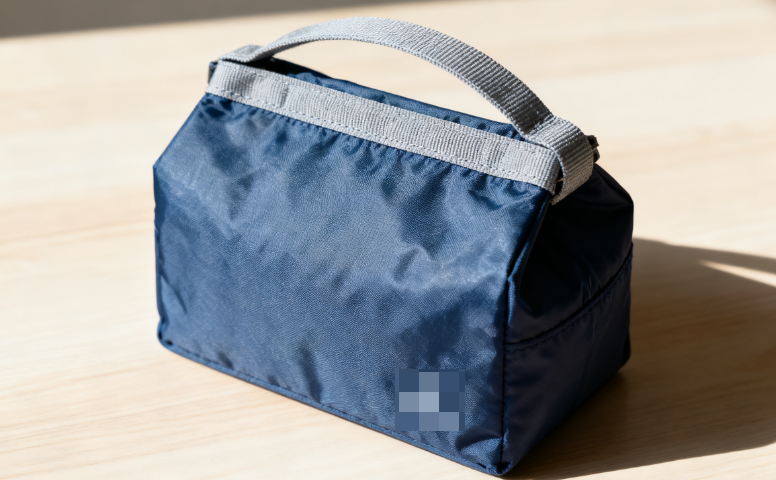
Nylon is a lightweight yet highly durable option among common lunch bag materials. Known for its water resistance and strength, it’s a popular choice for insulated lunch bag manufacturers aiming to produce practical, long-lasting designs. Often used as the outer material of lunch bags, nylon helps protect contents from moisture and stains, while an aluminum foil or PEVA lining enhances insulation performance.
Pros
-
Water-resistant and easy to clean
-
Strong and abrasion-resistant
-
Lightweight and flexible
Cons
-
Not biodegradable
-
Can retain odor over time
Lunch Bag Price Insight
Nylon offers excellent value for lunch bag cost management. Many wholesale lunch bag suppliers and OEM lunch bag manufacturers provide nylon bags at competitive factory prices, making them ideal for brands seeking affordable lunch bags for large-scale production. You can easily get a quotation for custom lunch bags or compare lunch bag prices online before placing a bulk lunch bag order.
Neoprene
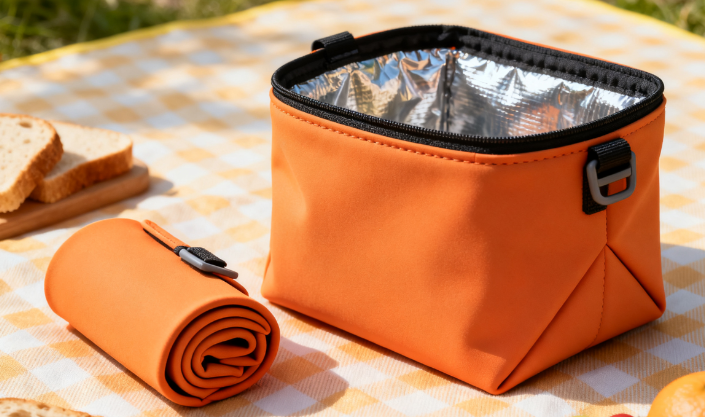
Neoprene is a synthetic rubber material well-known for its elasticity, durability, and insulation. Commonly used in insulated lunch bags, it helps maintain food temperature for hours—keeping hot meals warm and cold drinks fresh. Its soft texture and stretchable nature make it a popular choice for stylish and functional eco-friendly lunch bag materials. Typically, neoprene serves as both the outer and inner material of lunch bags, offering shock absorption and a premium touch.
Pros
-
Excellent insulation and flexibility
-
Water-resistant and easy to wash
-
Long-lasting and reusable
Cons
-
Slightly bulkier than nylon or polyester
Lunch Bag Price Insight
Neoprene bags generally sit in the mid-to-high lunch bag price range due to material quality and insulation performance. For brands managing bulk lunch bag orders, neoprene provides strong value through its durability and premium feel—an ideal balance between comfort and performance.
EVA (Ethylene Vinyl Acetate)
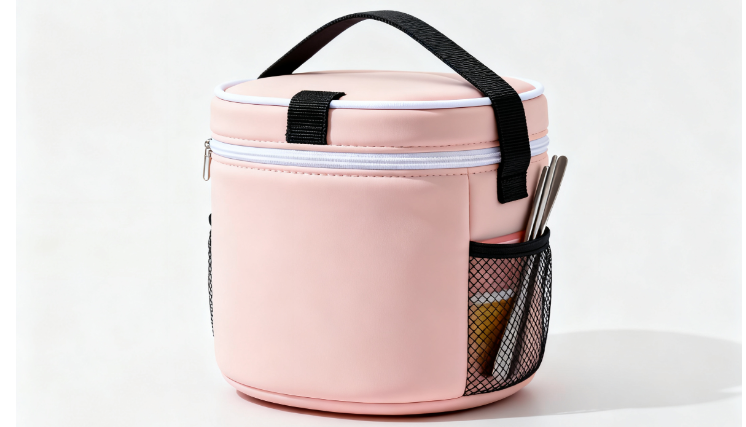
EVA is a lightweight, flexible, and non-toxic material widely used in insulated lunch bag manufacturing. Known for its soft texture and odorless properties, it is often chosen as the inner material of lunch bags to enhance food safety and moisture resistance. Many eco lunch bag manufacturers prefer EVA for its excellent balance between protection and environmental friendliness. It works effectively as a liner combined with outer fabrics like polyester or canvas to improve insulation performance.
Pros
-
Safe and food-grade
-
Water-resistant and easy to clean
-
Lightweight and flexible
Cons
-
Can deform under high heat
-
Less durable than neoprene
Lunch Bag Price Insight
EVA contributes to a moderate lunch bag cost, making it suitable for affordable lunch bags that still feel premium. The best lunch bag factory price may vary based on thickness, lamination, and combination with outer materials. For brands planning bulk lunch bag orders, EVA remains a reliable choice for maintaining quality while keeping overall lunch bag prices competitive.
Aluminum Foil
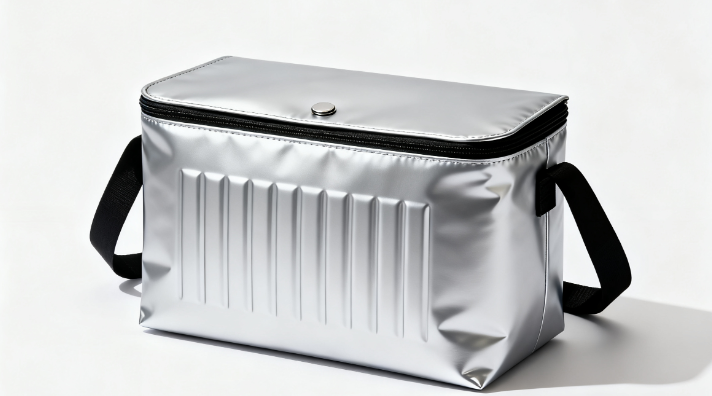
Aluminum foil is one of the most common thermal insulation materials for lunch bags, often used as the inner material of lunch bags to maintain temperature and prevent leakage. It reflects heat efficiently, keeping food warm or cold for extended periods. Because of its lightweight and cost-effective nature, it’s frequently chosen by insulated lunch bag manufacturers and brands seeking high performance at an affordable price.
Pros
-
Excellent heat and cold retention
-
Lightweight and waterproof
-
Prevents odor absorption and easy to wipe clean
Cons
-
Prone to tearing if not laminated
-
Limited flexibility and design variety
Lunch Bag Price Insight
Lunch bags with aluminum foil lining usually fall into the cheap lunch bags or affordable lunch bags category, depending on the outer material. They offer one of the best lunch bag cost advantages while still delivering reliable insulation. For brands planning bulk lunch bag orders, combining aluminum foil with polyester or canvas helps achieve optimal performance and maintain a competitive lunch bag factory price.
PEVA (Polyethylene Vinyl Acetate)
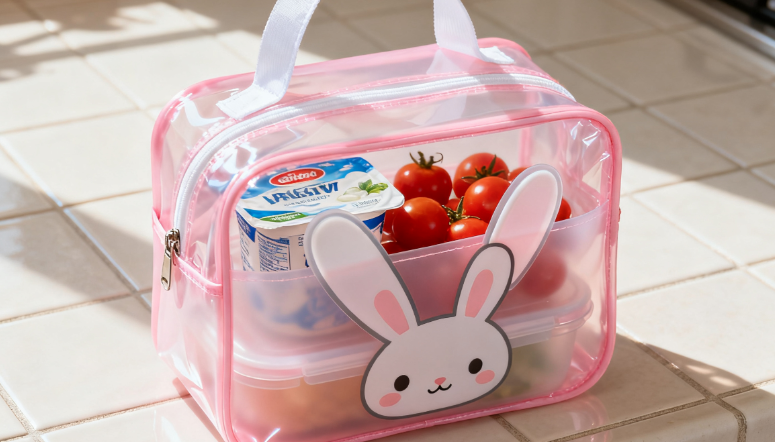
PEVA is a non-toxic, eco-friendly alternative to PVC, commonly used as the inner material of lunch bags. It provides excellent water resistance and flexibility while maintaining safety for food contact, making it a popular choice among eco lunch bag manufacturers and reusable lunch bag suppliers. PEVA is lightweight and often paired with durable outer fabrics like canvas or nylon to enhance the bag’s overall performance.
Pros
-
Non-toxic and safe for food contact
-
Water-resistant and easy to clean
-
Lightweight and flexible
Cons
-
Less durable than EVA or neoprene
-
Can wrinkle under heat
Lunch Bag Price Insight
PEVA helps maintain a moderate lunch bag cost, making it suitable for affordable lunch bags that meet eco-conscious standards. For bulk lunch bag orders, PEVA offers a practical solution for maintaining quality while keeping the lunch bag price competitive, especially when combined with robust outer materials.
RPET (Recycled Polyester)
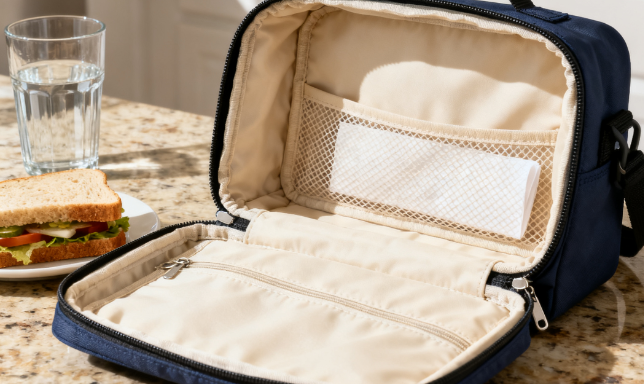
RPET is made from recycled plastic bottles and is increasingly popular among eco lunch bag manufacturers for its sustainable properties. Often used as the outer material of lunch bags, RPET provides durability, a smooth surface for printing, and a lightweight feel, making it ideal for reusable and environmentally conscious designs.
Pros
-
Eco-friendly and sustainable
-
Strong and durable
-
Lightweight and printable
Cons
-
Slightly higher lunch bag cost
-
Less soft than natural fabrics
Lunch Bag Price Insight
RPET lunch bags usually fall into a mid-range lunch bag price, offering a balance of sustainability, durability, and aesthetics. Its popularity is growing among brands focused on environmentally responsible products.
Kraft Paper (Washable Paper)
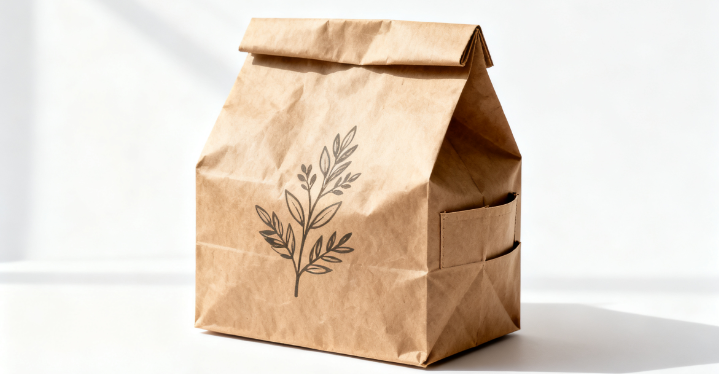
Kraft paper is a natural, eco-friendly material often used as the outer material of lunch bags to create a rustic and sustainable look. Its lightweight yet durable properties make it suitable for eco-friendly lunch bag materials that appeal to environmentally conscious consumers. Washable kraft paper can withstand daily use while maintaining a unique texture.
Pros
-
Biodegradable and sustainable
-
Lightweight and printable
-
Stylish, natural appearance
Cons
-
Less resistant to moisture and heavy wear
-
Can crease easily
Lunch Bag Price Insight
Lunch bags made from kraft paper generally have a mid-range lunch bag price. They offer an attractive option for brands seeking eco-friendly lunch bags with a natural aesthetic without significantly increasing production costs.
TPU (Thermoplastic Polyurethane)
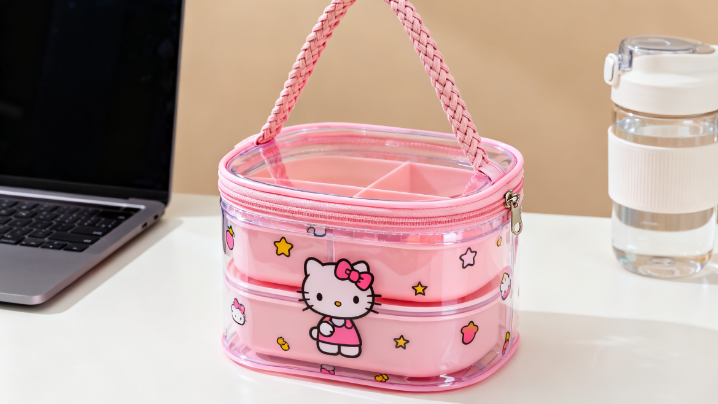
TPU is a high-performance, flexible, and durable material often used as both the outer and inner material of lunch bags. It is non-toxic, eco-friendly, and resistant to oil and abrasion, making it ideal for eco-friendly lunch bag materials that require long-lasting protection and a premium finish. TPU is commonly used in reusable or insulated designs for brands seeking quality and sustainability.
Pros
-
Durable and resistant to wear
-
Non-toxic and safe for food contact
-
Flexible and water-resistant
Cons
-
Higher lunch bag cost
-
Production requires advanced techniques
Lunch Bag Price Insight
TPU lunch bags typically fall into the mid-to-high lunch bag price range due to material quality and durability. It is an excellent choice for brands looking for eco-friendly, long-lasting lunch bags that justify a premium lunch bag price.
Conclusion
Choosing the right lunch bag material can make a significant difference in durability, insulation, and overall user experience. From affordable options like polyester and aluminum foil to premium, eco-friendly choices like RPET and TPU, each material has its unique advantages and limitations. Understanding these differences helps brands, manufacturers, and buyers make informed decisions for both individual use and bulk production.
For those looking to place a bulk lunch bag order or develop custom designs, partnering with an experienced lunch bag manufacturer ensures access to high-quality materials, reliable production, and competitive pricing. At Sunteam, we assist clients in selecting the best outer and inner material of lunch bags, optimizing both performance and cost. Whether you’re creating eco-friendly lunch bags, insulated lunch bags, or reusable lunch tote bags, our team can guide you from material selection to mass production, helping your brand deliver quality products that meet market demands.
Ready to start your next lunch bag project? Contact Sunteam today for a quotation and explore the best materials for your designs.

